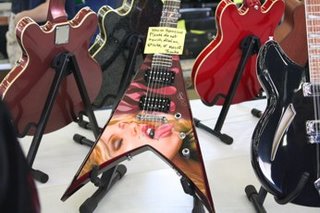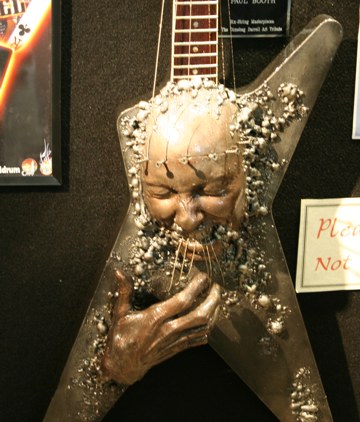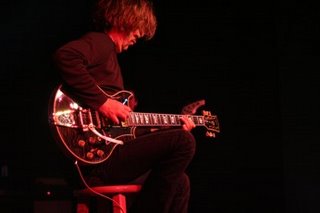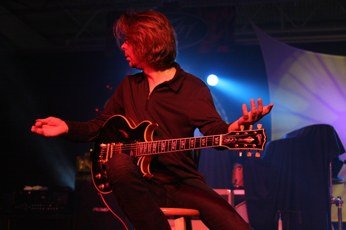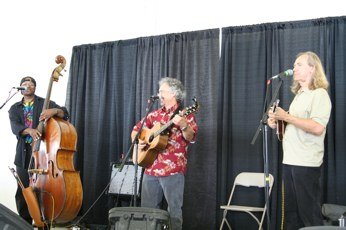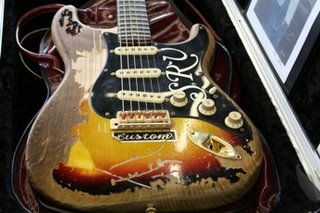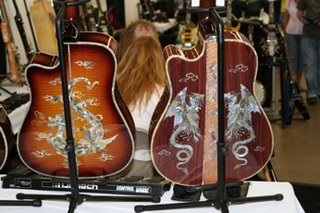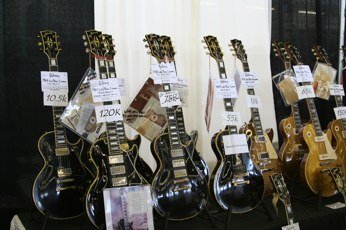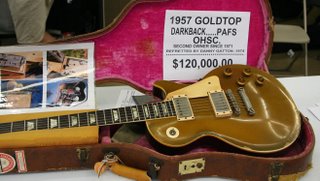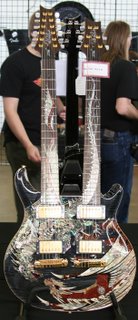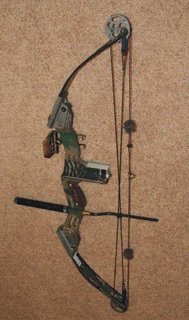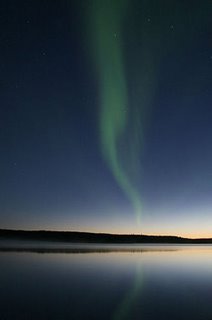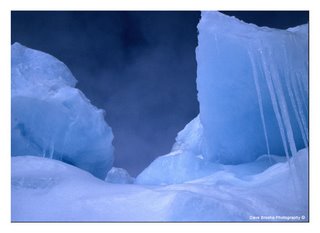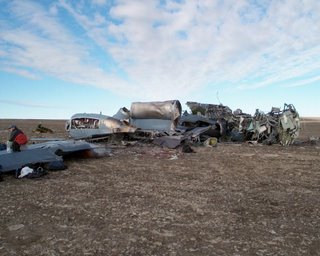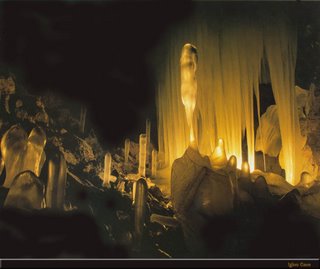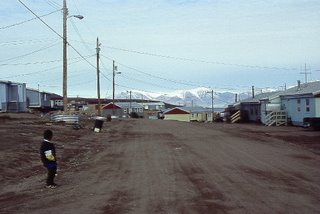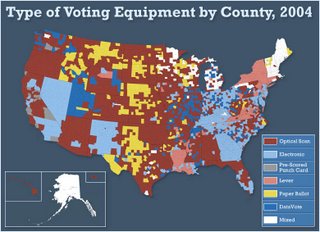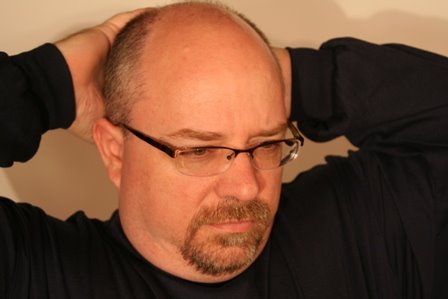Guitar vs Piano - a Comparison
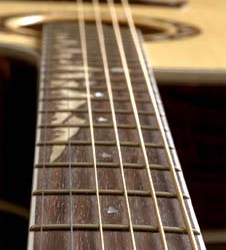

Recently, a friend of mine sent me a letter asking for some help and advice as she tries to learn guitar on her own. She is already a classically trained pianist, and so is quite familiar with music, but is struggling with learning to play guitar and, as in the movie “Young Sherlock Holmes”, doesn’t quite understand why it might take her more than a few days to master it.
If you are a guitar player yourself, please stop smirking! We all know how hard it is at first, and we all know the secret handshakes, etc., but it’s time to be nice and let new members into our secret club now. Having a piano player is a privilege. She is not a spy here to learn our secrets and then scoot back to the piano player’s club meetings and divulge all our best-kept jewels. The following is the note I sent to answer her questions.
~~~
Here’s what you need to know about that guitar playing stuff:
Start with chords. You asked what power chords are? Ok, let’s start with that.
Most of the kid’s rock music these days is all played on power chords with only down-stroke picking. This is not because there are great and wonderful musical things to be discovered, but rather because anyone can learn this style of playing VERY quickly.
And, frankly some of these kids are into it just because they look good holding a guitar and they like the 'image' and the idea of being in a rock band. For some of them, it’s as much about the tattoos, the piercings, and the parties as it is about the music. On the other hand, I have come to appreciate and enjoy some of the music I hear from some of these young rock bands. I never liked the original punk music from the 70’s but this is what that eventually evolved into and some of it is actually listenable ...to a degree.
I liked the latest album from All American Rejects, for example. But I have found that much of the ‘modern’ rock music that sounds pretty good is mostly because of the production. The production is excellent. Lots of good slick ideas, and good effects for dynamics and theatrics, and impactful moments. But the basic musical aspects of the songs themselves are sometimes relatively crude. At least on the instrument side. The vocals sometimes have some interesting aspects to them. I was planning to use a ‘modern rock’ sound for some film score work I am currently working on, and so I studied a few songs from several bands in this category, and took the time to learn the songs, but I was amazed when I saw just how simple they actually were. It’s mostly all just 3-note power chords, with just rare diversions from that. I was really expecting something a little more complicated.
But it's hard to complain when you look at Blues music, which some argue is all just one song with a million verses. The pattern is so similar, that many blues songs sound the same. (But at least they use jazz chords!)
If you take a modern band like All American Rejects, or Green Day, or Billy Talent, or whatever, and then find a song of theirs you like and look up the TAB music on the web, you might find they all use a pretty similar structure of chords. It’s the same ‘shape’ of finger placements and it just slides up and down the neck from one position to the next to make different chords.
There are exceptions, of course. This is a bit of a cynical oversimplification and it's unfair to a degree, but a lot of stuff in the past 5 years IS like this and I’m trying to get that point across. You really can play a large percentage of ‘modern’ rock music with this basic chord structure. You’ll be amazed at how simple it is. But, for a beginner – it’s tremendous fun, because you’ll be able to play along with songs on the radio in no time, with almost no practice at all.
A POWER chord:
A power chord is a major-toned chord, heavy on the 5th interval which, when cranked up loud and distorted, sounds ‘powerful’. I have my own full 6 string form, but here is the form the kids are using these days:
It is three notes, basically. The root, the 5th, and the octave. 1,5,8. These are played on the 6th, 5th, and 4th strings usually, but then they sometimes move the pattern over one string so it’s the 5th, 4th, and 3rd strings. The 6th string is the fattest one. The one closest to your chest when looking down on the guitar as you play it. The lowest sounding one. Tuned to E. (sometimes tuned down to D for ‘Dropped-D” tuning. That allows the player to simply bar one single finger across three strings and move it up and down. Cranked up, it sounds heavy and mean, but is the lowest common denominator among guitar players. Many guitar players don’t consider this to be really ‘playing’, yet there are some people making a living doing this.)
Place your index finger on the 5th fret. That is an A note. Now place your 3rd finger two frets up on the 7th fret, and bridge it across the 5th and 4th strings. The note from the 5th string is an E, and the note from the 4th string is the next higher A again. Just play those three strings and no others. Down-stroke with the pick, and that’s it. Must be played with thunderous volume and distortion on high! Distortion is part of the chord. (actually true. There are harmonics that come from distorting this particular chord, that don’t appear when you play it clean. Try it both ways and you’ll see.)
Now take that same pattern/finger positioning and simply slide it up and down the neck to different positions. And that’s what they do. Just like that. At the 5th fret, it’s an A chord, at the 7th, it’s a B. At the 8th, it’s a C chord, at the 10th, it’s a D, and so on. I read a couple of interviews in Guitar Player where some punk guitar players say that they have even removed the top 2 strings because they never use them. They play it like a four string. One guy said he only ever plays the two bottom strings. (The 'bottom strings' refers to the bass ones. ”Top strings” refers to the thinnest, highest tuned ones, closest to your legs) In super-distortion mode, with screaming vocals, you can see how that is.
Anyway, try it. This is a major power chord. It covers much of the modern punk style rock music. Get some TABs off the web for songs you might like, and play along.
Then, once you get comfortable, you can start to expand your horizons to learn minor chords, and 7ths, 9ths, 13ths, major/minor variations on each of those, and then diminished, augmented, etc. These are the so-called “Jazz Chords”. On guitar, Jazz is much more advanced than rock. But you knew that.
Then you can get into learning scales, and you can see how the scales interact with the chords.
Guitar vs. Piano.
I have given a little thought to the comparisons between guitar and piano and as a trained classical pianist, now learning to play guitar, this discussion might be useful and interesting to you.
There is an entirely different mental concept behind the guitar as compared to the piano. The piano is simultaneously easier AND harder to play than the guitar. The ways in which the piano is more difficult to play might be as follows: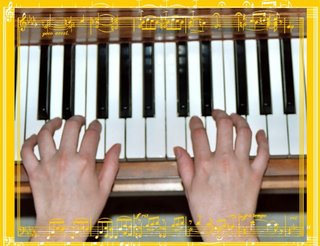 1) You are playing two things at the same time. You play one chord or melody with the left hand, while doing another with the right hand. That is hard! It is not unheard of on the guitar, but it is VERY difficult. Chet Atkins and Andre Segovia were known for this. I have also done it a bit from time to time myself, but it takes planning and huge effort because of the special challenges with the guitar by it’s very nature. But every piano player does this. It’s simply part of how the instrument is played, and to me, as a guitar player, I find it magical and impressive – and the hardest part.
1) You are playing two things at the same time. You play one chord or melody with the left hand, while doing another with the right hand. That is hard! It is not unheard of on the guitar, but it is VERY difficult. Chet Atkins and Andre Segovia were known for this. I have also done it a bit from time to time myself, but it takes planning and huge effort because of the special challenges with the guitar by it’s very nature. But every piano player does this. It’s simply part of how the instrument is played, and to me, as a guitar player, I find it magical and impressive – and the hardest part.
2) You can play 10 notes at a time instead of 6, as on a guitar
3) It is such a high-fidelity instrument covering so much of the musical spectrum, that you are responsible for providing much more of the overall sound, most of the time.
4) In some classical music, there are some very complex arrangements written for piano. A lot of black notes on paper. You are expected to play it all, even though it might involve different melodies and different rhythms on each hand at the same time.
However, the piano is easier to play than guitar, in the following areas:
1) All the notes are in a simple sequence from low to high. There is no skipping or gaps. It is linear. The notes run from A to G in sequence, including sharps/flats. Everything is exactly where you would expect them to be.
2) The pattern of the keys repeats. What works in one octave can be repeated in the next pattern and it still works.
3) You only have to do one thing to make a sound come out. You press a key. One finger on one hand can make a sound, there is no coordination of two fingers to make a single sound come out. Without this necessary two-handed coordination for every note, it is easier to play faster on a piano than on a guitar. Imagine if you had to play everything in an octave synchronization to make any sound come out at all. Imagine the notes on your right hand had to also be played with your left hand and be coordinated to press the key at EXACTLY the same moment in order for just a single note to come out. How fast would you be able to play then? (that is what you do to play lead on a guitar. Only it’s even harder than that for other reasons I’ll explain in a bit.)
4) It is mechanically triggered. A piano is a stringed instrument, but unlike all other stringed instruments from guitars to harps, to lutes (except perhaps a hammer-dulcimer), the musician never actually touches the strings. Strictly speaking, (from a guitarists’ perspective) you don’t actually ‘play’ the piano directly. Rather, you play KEYS, which operate hammers, and the HAMMERS bang on the strings to make the sounds. They always hit the right strings, and they always hit it the same way. The only touch elements to playing it are basically how soft or hard you hit the keys, and how long you hold the keys down, and the sustain pedal.
With the guitar you have a few extra challenges:
1) As implied above, you must both finger a string at a certain fret AND pick it at exactly the same moment in order to make any sound come out at all. So playing quickly becomes a real challenge since you have to coordinate the two entirely different activities together very precisely. 2) There are 6 strings and they are all tuned to a different scale, instead of one single scale of notes as on a keyboard. So the note at the 5th fret on one string is different from the note at the 5th fret of a different string. It’s like playing on 6 keyboards at once, where each keyboard can only play one note at a time, and so to make chords you place them stacked very close together, and each keyboard is tuned to a different scale of notes, and you have to make chords by bridging across the multiple keyboards at once with your fingers inserted between the keyboards. Imagine that!
2) There are 6 strings and they are all tuned to a different scale, instead of one single scale of notes as on a keyboard. So the note at the 5th fret on one string is different from the note at the 5th fret of a different string. It’s like playing on 6 keyboards at once, where each keyboard can only play one note at a time, and so to make chords you place them stacked very close together, and each keyboard is tuned to a different scale of notes, and you have to make chords by bridging across the multiple keyboards at once with your fingers inserted between the keyboards. Imagine that!
3) Because of the differently tuned strings, there are multiple forms of chords in the same register. But they have different sounds. For instance, there are 7 versions of a C-major chord that come immediately to mind. And they all sound different. This is why it is very difficult for guitarists to read music from traditional “standard notation” music written for piano and wind instruments. Wind instruments play one note at a time, so it is not an issue for them since they play no chords. Pianos play multiple notes to make chords, but there is only one scale on one keyboard. And the notes are all in sequence. Guitars have 6 strings, six scales and they are even offset for the last two. Standard notation doesn’t make sense for guitar, because the chord notes shown are ambiguous, and can be played too many ways and they all sound different. So this is why for many years, they used so-called ‘chord charts’ These are tiny pictures of which strings and frets are used and they represent named chords. Now, although that is still used, the bulk of written music is done in “Tabulature”, called TAB for short. It looks a little like standard notation because there are horizontal lines set up in bars, with notes and rests, etc., except the notes are numbers, and the horizontal lines actually represent strings. The 6 strings of the guitar. The numbers represent the fret number. Then there is a whole series of symbols that represent things you do on a guitar that are not even possible on a piano. For example sliding into a note from below or above, or bending notes, or hammer-ons, pull-offs, pinch-harmonics, tap-harmonics, etc. So standard notation, designed for piano, does not allow for these elements.
4) Guitars are sometimes retuned to a different tuning – which changes all the notes on every string at every fret. None of the old chords make sense and you have to learn all new chords. It’s like learning a completely different instrument. Imagine that you sat down to a piano and someone had jumbled all the notes that came out when you played the keys. So that when you pressed a C, an A would come out and when you press an F a B comes out, and a B is an A, a G is a C, etc. Imagine none of your chords making sense anymore. Well, that is what alternate tunings are like on a guitar. It seems crazy, but people do it to get different sounds out of the instrument. Deeper sounds, more jangly sounds, resonant sounds, unusual chord sounds, etc. All highly interpretive and highly musically creative. On my acoustic album, “Natural Light” I used 4 different tunings on those songs. Standard: EADGBE, then also, CGCGGC, CGCF#GC, and DADF#AD. As you can imagine, standard notation just doesn’t work well for this, but TAB does. You simply give a legend that shows what the 6 strings are tuned to. So you can write in TAB in any tuning – because you never have to know what the notes are even called. It’s not about named notes. It’s not about the key you’re in or the sharps and flats in that key. It’s all about string and fret position. 
5) Then there is fretboard fingering. Even if you finger the right string and fret and pick the string at the same time, you might not get a sound, or the sound dies quickly with a ‘thunk’ kind of sound. This is because there is a whole world of ‘touch’ issues around how to play and feel the strings on the guitar. It is not simply a hammer hitting the string, with each string providing a separate note (like a harp). No, here, fretting/fingering techniques are extremely important. You must press firmly down on the string, just behind the fret to allow the fret to become the terminal point for the string, and therefore create a clean, resonant sound. Also, you must not pick slightly before or slightly after you finger the note – this causes slurring, and short lifespan of the note. Or no note at all. You must be PERFECTLY synchronized. Also, your fingering on the fingerboard makes a difference depending on the angle of your finger, the roll of it, the nail, the meat of it, the flatness of it, etc. Remember the game ‘Twister’? Well some chords remind me of that for the finger placements. Multiple fingers placed in ‘Twister’ mode (to make a chord) on the fingerboard present more challenges – how to hit the right note with enough pressure and yet not touch any other notes or other strings or brush them and thereby dampen them. This gets tricky. Especially since you not only have to hit this chord with all these factors in mind, but you must hit it quickly on the fly in a series of chords as part of a moving progression.
6) Also you have to develop techniques for dampening strings that should not be heard, while allowing other stings to ring through. These are advanced techniques and can be done with right or left hand depending on the situation.
7) Also, there are various different picking techniques involved. With piano, there is only hitting the key with your finger which operates the hammer which hits the string. You can hit it hard or soft to get dynamics on a given note. Here on guitar, there is certainly hitting it hard and soft, sustaining a note a long time, or making it brief, but there is also downpicking, up-stroking, circle-picking, sweep-picking, finger picking (different styles of this too – Merle Travis, Chet Atkins, Jerry Reed, Banjo-style, Classical, etc.), finger-plucking/pulling, hammer-ons and pull-offs (single and two-handed), alternate picking, smooth legato-style, there is making it ‘chunk’ by palm-muffling as you downstroke, and more. There is picking on the note then bending up. There is picking on the up-bend and relaxing back down to rest note, There is sliding into the note from the fret above or below, there is pinch and tap-harmonics of a note and different techniques for each. Etc.
8) Picking with picks, picking with fingers, picking with nails, picking with combinations of picks (for the bass string side) and fingers for the treble string side.…
9) Then there is the whole world of using vibrato. Whether to twist your hand to get it with a repeated semi rotation(my friend Neil Doherty has a natural ability for this, but I could never manage this with my left hand for some reason), or do it back and forth from the wrist. Tremolo bar techniques, etc. There are many different ways to hit a note on a guitar, and they all have to do with feel. The feel of the artist and sensitivity to the guitar and how it works and how it responds. This is why it can be such a sensual instrument. Since your fingers are touching the strings directly, your approach, touch, and emotions are translated directly into the sound coming out, and so you can be very expressive in how you play, once you have the feel for it. For an example, listen to my last song – called "Goodbye". Hopefully, you’ll get a sense of this from that.
10) Then there is the whole world of guitar sound effects and how to play them as you play the guitar. Piano has no equivalent, but synthesizers do to a degree. But with guitar there are certain effects that are integral, not just in how it sounds, but in how you PLAY it – such as a wah pedal, or a volume pedal, or a voice box, even basic effects like sweep flangers, swell, autowah, and compressors, etc.
11) Then there is slide guitar playing and all the techniques there. Playing combinations of fretted notes along with the slide, some may be behind the slide. Different tunings to accommodate the slide. Muting with other fingers, plucking the strings, using fingerpicks for slide playing, etc. This is another whole artform.
But Piano is Not Easy Either...
As I mentioned above, piano is not exactly a walk in the park either. It also has it's challenges. The two instruments are different. The guitar is more limited in it's scope and is played by directly touching the strings which presents many opportunities, but also many difficulties and requires many techniques, while the piano is larger, more expansive, and more of the music is played on this instrument, but also, more mechanical, so the difficulties generally arise from the music itself rather than the limitations of the instrument, since it is easy to make chords and sounds on a piano, but difficult to play the vast sounds and complex melodies that exist in some of the more challenging piano music.
I hope I didn’t insult any piano players with this! I am always very impressed by someone who plays piano well. I’d love to learn! – if I only had the time.

